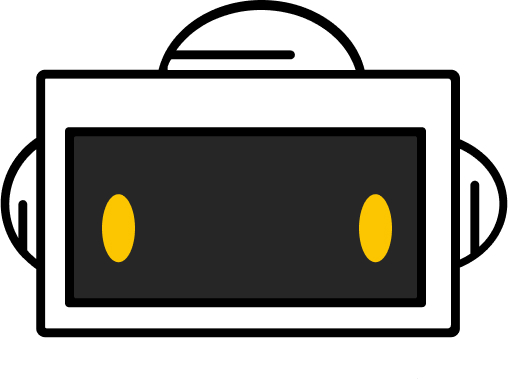Variables and Data Type
To make a variable in JavaScript, you have 3 options.
- Using
var(which is short for variable) like this:
var x = 5;
var y = 6;
var z = x + y;
- Using
letlike this:
let x = 5;
let y = 6;
let z = x + y;
- Using
const(which is short for constant) like this:
const x = 5;
const y = 6;
It’s important to realize here that a constant does not change. This means that these values are stuck to what they are set to at the beginning.
You can use var, let, and const to hold any of the different data types in JavaScript. This is called having dynamic types.
JavaScript has 8 different data types:
- String
- Number
- Boolean
- Undefined
- Null
- Symbol
- Object
- BigInt
We’re going to go over the most important ones: String, Number, Boolean, Undefined, and Object!
String
Strings can be made up of words or a group of letters.
// String examples
let animal = "Elephant";
let alphabet = "abc";
let name = "John";
Number
Numbers can be used for all different types of numbers (small and big!). That is, until you need REALLLLY big numbers, then you need a special variable called a bigint (but that’s a topic for another time).
// Number examples
let age = 16;
let weight = 7.5;
Boolean
Booleans represent true and false values so like telling the truth and telling a lie.
// Boolean examples
let truth = true;
let lie = false;
let x = true;
let y = false;
Undefined
Undefined means that the variable has no value (because 0 is technically a value)!
// Undefined example
let x = undefined;
Object
An object in JavaScript is a bit more complicated. It can be a built-in object such as an array, dates, maps, sets, and more, or it can be a user-defined array, which means it can be any group of data.
const person = {firstName:"John", lastName:"Doe"};
// Array object:
const cars = ["Saab", "Volvo", "BMW"];
// Date object:
const date = new Date("2022-03-25");
// User-defined object (in this case first and last names)
const person = {firstName:"John", lastName:"Doe"};
When you’re unsure what type of variable it is…
Use the typeof operator! If you run the typeof operator with a variable, it’ll tell you what it is:
typeof "Amy" // returns "string"
typeof 0 // returns "number"
typeof (3) // returns "number" (the parantheses don't do anything)
typeof (3 + 4) // returns "number"

You did it!
Workshop complete
